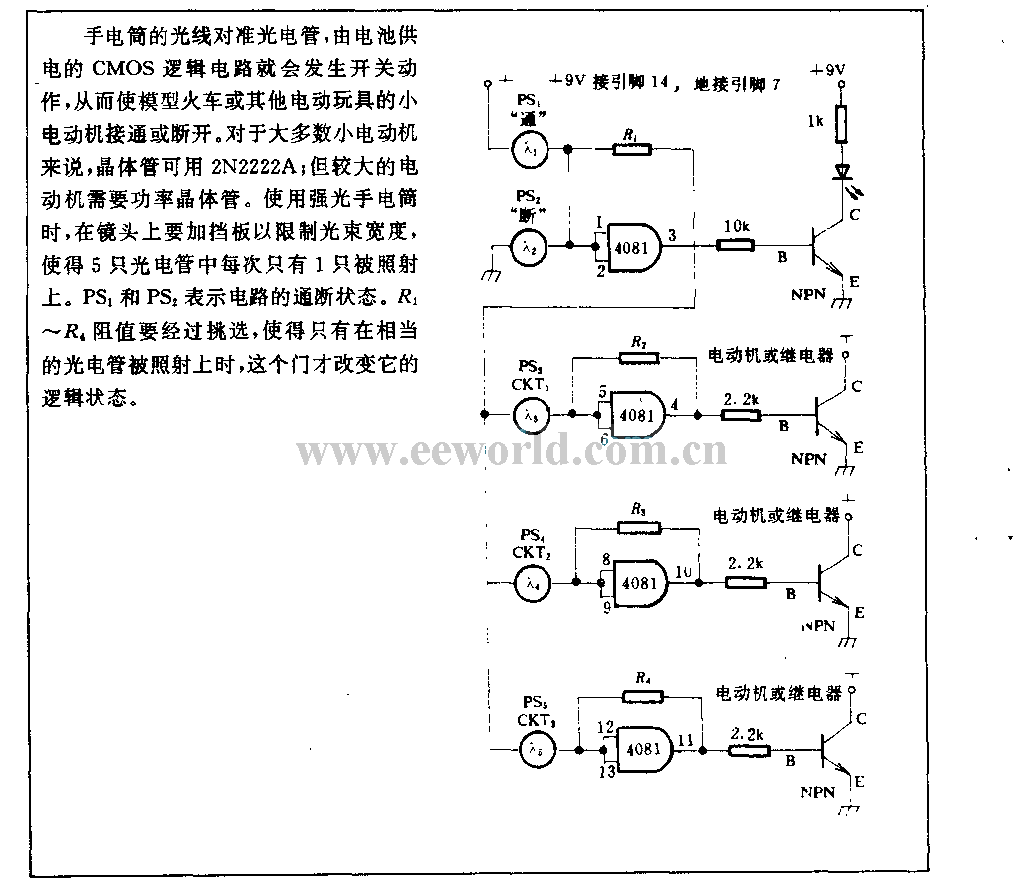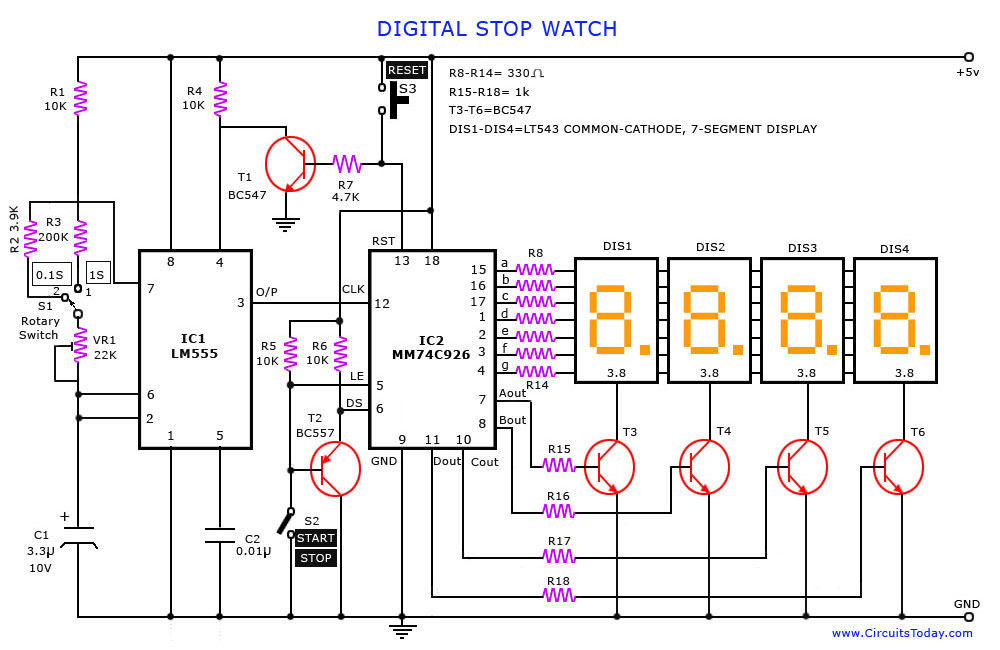
Light-control electric toy circuit

The light from a flashlight is directed at a phototube, which activates a CMOS logic circuit powered by a battery. This circuit controls the switching action to turn the motor of a model train or other electric toys on or off. For most small motors, a 2N2222A transistor can be utilized; however, larger motors require a power transistor. When using a high-intensity flashlight, it is advisable to add a baffle to the lens to limit the light.
The described circuit employs a phototube as a light sensor, which is sensitive to the illumination provided by the flashlight. When light falls on the phototube, it generates a small current that is fed into the CMOS logic circuit. The CMOS circuit is designed to operate with low power consumption, making it suitable for battery operation.
The output of the CMOS circuit controls a transistor switch, which in turn drives the motor. The choice of the transistor is crucial; for small motors, the 2N2222A is typically sufficient due to its ability to handle moderate current and voltage levels. However, for larger motors that require higher current, a power transistor such as the TIP120 or similar should be employed to ensure reliable operation without overheating.
Furthermore, the implementation of a baffle in front of the flashlight lens serves to focus the light more effectively onto the phototube, enhancing the sensitivity and reliability of the circuit. This adjustment is particularly important when using high-intensity flashlights, as excessive light can lead to false triggering of the circuit.
In summary, this circuit design integrates a phototube, a CMOS logic circuit, and a transistor switch to create a responsive control system for model trains and electric toys, allowing for efficient operation powered by a battery source while ensuring adaptability for various motor sizes.The light of flashlight aims at phototube, then CMOS logic circuit which adopts battery as power supply will occur switch action to turn on/off the motor of model train or other electric toys. To most small motor, the transistor can use 2N2222A; but the larger motors need power transistor. When using highlightflashlight, to add a baffle to lens to limit th.. 🔗 External reference
The described circuit employs a phototube as a light sensor, which is sensitive to the illumination provided by the flashlight. When light falls on the phototube, it generates a small current that is fed into the CMOS logic circuit. The CMOS circuit is designed to operate with low power consumption, making it suitable for battery operation.
The output of the CMOS circuit controls a transistor switch, which in turn drives the motor. The choice of the transistor is crucial; for small motors, the 2N2222A is typically sufficient due to its ability to handle moderate current and voltage levels. However, for larger motors that require higher current, a power transistor such as the TIP120 or similar should be employed to ensure reliable operation without overheating.
Furthermore, the implementation of a baffle in front of the flashlight lens serves to focus the light more effectively onto the phototube, enhancing the sensitivity and reliability of the circuit. This adjustment is particularly important when using high-intensity flashlights, as excessive light can lead to false triggering of the circuit.
In summary, this circuit design integrates a phototube, a CMOS logic circuit, and a transistor switch to create a responsive control system for model trains and electric toys, allowing for efficient operation powered by a battery source while ensuring adaptability for various motor sizes.The light of flashlight aims at phototube, then CMOS logic circuit which adopts battery as power supply will occur switch action to turn on/off the motor of model train or other electric toys. To most small motor, the transistor can use 2N2222A; but the larger motors need power transistor. When using highlightflashlight, to add a baffle to lens to limit th.. 🔗 External reference





